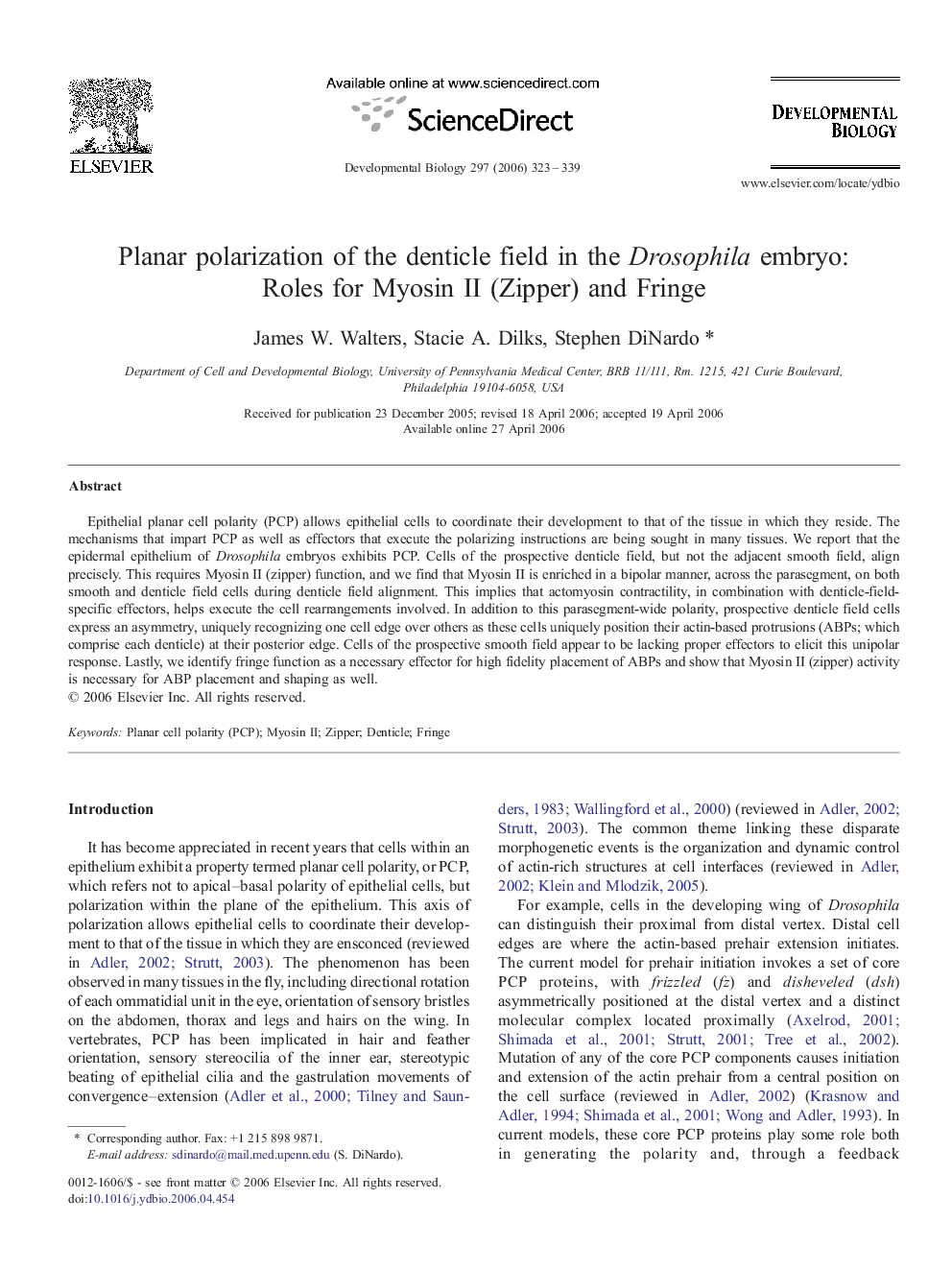| Article ID | Journal | Published Year | Pages | File Type |
|---|---|---|---|---|
| 2175775 | Developmental Biology | 2006 | 17 Pages |
Epithelial planar cell polarity (PCP) allows epithelial cells to coordinate their development to that of the tissue in which they reside. The mechanisms that impart PCP as well as effectors that execute the polarizing instructions are being sought in many tissues. We report that the epidermal epithelium of Drosophila embryos exhibits PCP. Cells of the prospective denticle field, but not the adjacent smooth field, align precisely. This requires Myosin II (zipper) function, and we find that Myosin II is enriched in a bipolar manner, across the parasegment, on both smooth and denticle field cells during denticle field alignment. This implies that actomyosin contractility, in combination with denticle-field-specific effectors, helps execute the cell rearrangements involved. In addition to this parasegment-wide polarity, prospective denticle field cells express an asymmetry, uniquely recognizing one cell edge over others as these cells uniquely position their actin-based protrusions (ABPs; which comprise each denticle) at their posterior edge. Cells of the prospective smooth field appear to be lacking proper effectors to elicit this unipolar response. Lastly, we identify fringe function as a necessary effector for high fidelity placement of ABPs and show that Myosin II (zipper) activity is necessary for ABP placement and shaping as well.
